Did you know that nearly one in three adults suffers from poor circulation issues that go undiagnosed? If you’re feeling sluggish, experiencing cold hands or feet, or looking for effective ways to improve blood circulation and boost your energy and health, understanding the importance of exercises for better circulation may be the game changer you need.
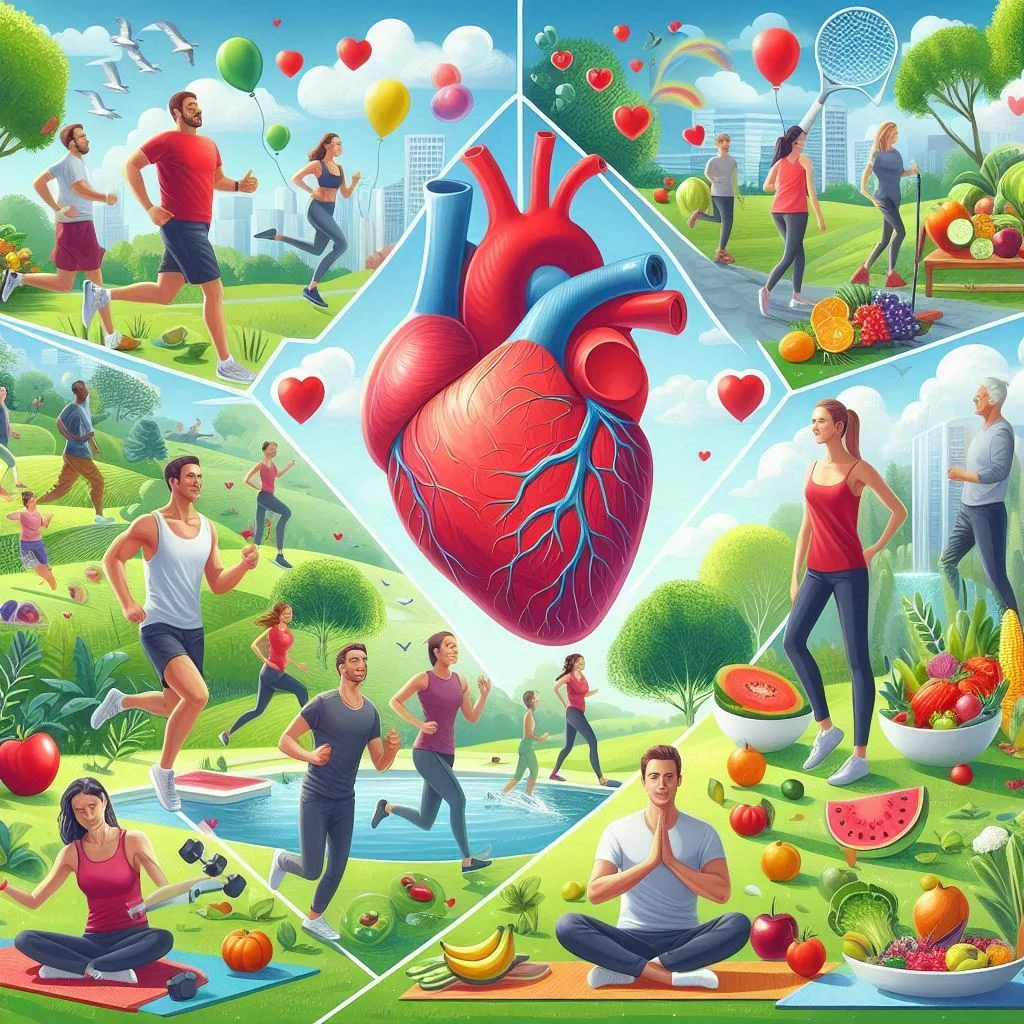
Circulation is the very essence of your vitality—nourishing cells, removing waste, and fueling every bodily process. In this comprehensive guide, you’ll discover actionable steps and proven routines to help you improve blood flow and reclaim your wellness.
The Importance of Exercises for Better Circulation
"The body tries to protect blood flow to the vital organs, which is why symptoms of poor circulation are usually first noted in the extremities... anything that gets in the way of the flow of blood will impact this function". - Dr. Veenadhari Wang, Assistant Professor of Family and Community Medicine at Baylor College of Medicine
Poor circulation quietly impacts millions, often manifesting as fatigue, cold extremities, or muscle cramps due to reduced blood flow. Yet, optimizing your vascular health doesn’t require complicated tools or extreme gym routines. The right exercises for better circulation not only help pump blood more efficiently to your extremities but also improve blood flow, support healthy blood pressure, reduce the risk of blood clots, and lower your chances of cardiovascular diseases.
Embracing movement is more than just a fitness goal—it's an essential pillar in improving circulation, keeping your legs energized, supporting your calf muscles, and safeguarding your vascular health. Whether you’re taking the first steps toward activity or searching for advanced ways to boost your body’s oxygen and nutrients, regular movement is your best defense against poor blood flow and its hidden consequences.
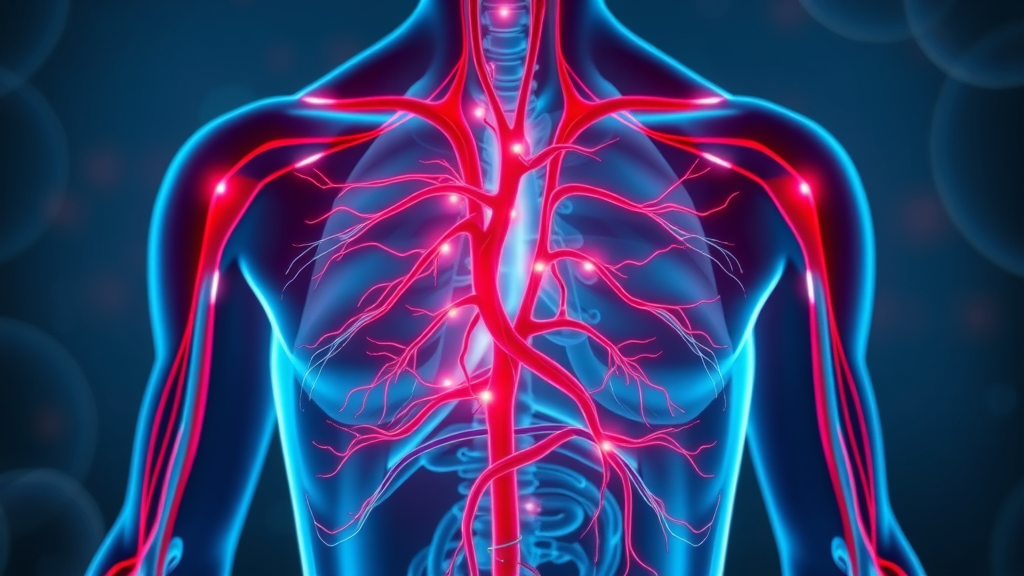
What You'll Learn About Exercises for Better Circulation
Why blood circulation matters for health and vitality
How exercises for better circulation improve blood flow and overall wellness
Key exercises to target blood vessel health and reduce blood pressure
Practical routines for all fitness levels
Expert tips on improving blood circulation naturally
Understanding Blood Circulation and Its Role in Health
The Science: How Exercises for Better Circulation Impact Blood Flow
Blood circulation is vital for delivering oxygen and nutrients to all parts of the body while removing waste products, ensuring optimal blood flow and vascular health. When you incorporate exercises for better circulation, muscles contract and relax, acting as a pump to help return blood from your lower legs and extremities to the heart. This physical activity strengthens your vascular system—especially your blood vessels—and can help prevent blood clots, varicose veins, and conditions linked to venous insufficiency.
The real boost occurs at the cellular level, where improved flexibility and enhanced blood flow promote longevity and improved cardiovascular health. Even simple movements like ankle pumps or brisk walking can stimulate the vascular system, reduce blood pressure, and promote better distribution of oxygen throughout the body. So, by including regular exercise in your daily routine, you ensure your blood flowing efficiently, keeping your arteries and veins clear and your energy levels up.
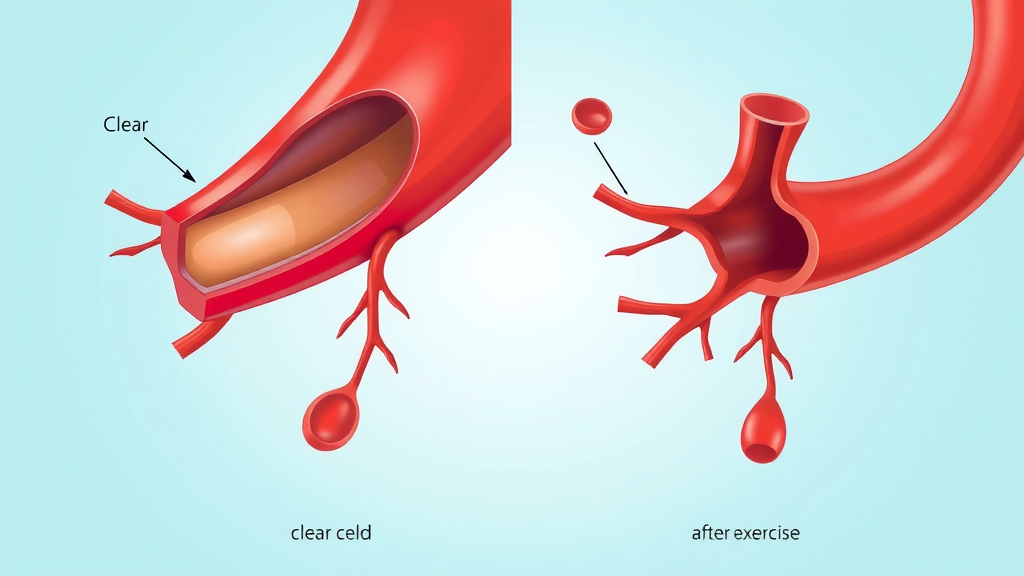
Blood Vessel Function and Circulation: Why Movement Matters
Blood vessels are the lifelines of circulation, transporting blood throughout the body. Sedentary lifestyles often lead to poor circulation, where blood pools in the lower limbs, the calf muscle pump weakens, and waste products accumulate. Consistent exercise tones blood vessels, encourages healthy vascular function, and supports good circulation by increasing the heart’s efficiency in pumping blood. These factors together form the foundation for cardiovascular health and overall vitality.
Exercise also fosters flexibility in blood vessel walls, reduces the formation of blood clots, and mitigates risks associated with high blood pressure and poor circulation. If you want to improve circulation and avoid pitfalls like varicose veins, routine movement and stretching can make all the difference.
Blood Vessel Health: Before and After Exercise Routine
Health Indicator |
Before Exercises for Better Circulation |
After Regular Exercise |
|---|---|---|
Blood Flow |
Sluggish, uneven |
Improved, steady |
Blood Pressure |
High/variable |
Controlled, reduced |
Vessel Elasticity |
Stiff, constricted |
Flexible, responsive |
Risk of Blood Clots |
Elevated |
Lowered |
Waste Removal |
Inefficient |
Efficient |
Recognizing Poor Circulation: Signs and Symptoms
Poor Circulation Warning Signs
Identifying signs of poor circulation early is crucial to effectively intervene and prevent more serious vascular problems. Some of the most common indicators include:
Cold extremities
Numbness or tingling
Muscle cramps
Swelling
Slow wound healing
Sometimes, overlooked symptoms such as persistent fatigue or heavy legs and feet can be subtle signs of poor circulation and impaired blood flow. Left unmanaged, these issues can lead to complications like blood clots and diminished heart health, so paying attention to your body’s signals is indispensable.

Risks Associated With Poor Circulation
Poor circulation does more than cause discomfort—it may lead to severe health consequences if unaddressed. Chronic reduced blood flow increases your risk for blood clots, venous insufficiency, and can contribute to conditions such as high blood pressure, varicose veins, or diabetes-related issues. If circulation in the lower legs is particularly compromised, wounds may heal slowly and risk of infection or ulceration rises.
“Circulation problems can be like a canary in a coal mine. Your heart pumps blood to this network of highways and small roads that all lead to your organs. So if we find disease in the arteries, we can bet there's disease elsewhere”. - Dr. Srihari S. Yanamandala, MD, a cardiologist with Harvard Health
Reduced vascular health can also affect your brain, reducing mental clarity and energy, and diminish your overall cardiovascular health. Taking steps now with the right exercises for better circulation can help prevent these risks and protect your long-term vitality.
How Exercises for Better Circulation Improve Blood Flow
Mechanisms: Exercising to Enhance Blood Circulation
When you engage in regular exercise, you activate large muscle groups—especially the calf muscles—creating a “muscle pump” that improves blood flow by returning blood from the lower legs back to the heart. This process is central to improving circulation, helping to keep blood flowing, reducing risk of stagnation, and boosting vascular health. Even activities like walking or simple ankle pumps can stimulate better blood flow in the legs.
Exercise increases heart rate and respiratory activity, ensuring oxygen and nutrients are distributed efficiently. The increased movement also promotes blood vessel flexibility, reducing blood pressure and supporting robust cardiovascular health. With consistent movement, even a few minutes daily, you can support your body’s ability to pump blood effectively and keep every cell nourished.

How Physical Activity Supports Blood Vessel Health
Regular exercise helps to strengthen your blood vessels and reduce the likelihood of clots or blockages. As muscles contract and relax, they squeeze nearby veins, encouraging upward movement of blood—this is especially vital for those who spend extended time sitting or standing. Activity helps maintain the health of blood vessel walls and can even reverse early stages of poor circulation.
Improving circulation through exercise not only keeps your blood flowing, but also helps regulate blood pressure and reduce inflammation throughout the vascular system. In turn, this lowers the risk for cardiovascular diseases and supports overall wellness. From aerobic routines to stretching regimens, any movement that gets the heart pumping contributes to long-term vascular resilience.
Main Exercises for Better Circulation and Their Impact
Exercise |
Impact on Blood Flow |
Effect on Blood Pressure |
Suitable For |
|---|---|---|---|
Brisk Walking |
High |
Reduces |
All levels |
Jogging |
High |
Reduces |
Moderate/Advanced |
Swimming |
Very High (thanks to buoyancy of water) |
Stable/Low |
All, especially joint issues |
Bodyweight Squats |
Moderate |
Reduces |
All levels |
Yoga & Stretching |
Moderate |
Stabilizes |
All, including seniors |
Top Exercises for Better Circulation: Step-by-Step
Aerobic Workouts to Improve Circulation
Aerobic exercise is the cornerstone for improving blood flow and overall vascular health. Brisk walking, jogging, swimming, and cycling are effective, accessible routines that stimulate your heart and keep blood vessels open. These activities utilize the body's largest muscles and encourage continuous blood movement, which is crucial for preventing blood clots and maintaining optimal blood pressure.
Brisk walking
Jogging
Swimming
Cycling
For beginners, brisk walking is one of the simplest and most effective ways to pump blood efficiently, particularly in the lower legs. Swimming, with the buoyancy of water, reduces joint strain while powerfully improving circulation. Each activity can be adapted to your fitness and comfort level, making aerobic workouts an inclusive tool for everyone.

Strength Training and Blood Flow
Strength training is equally important for improving blood circulation. Bodyweight squats, resistance band exercises, and light weight training not only build muscle but stimulate blood vessels throughout the body. When you contract your muscles during strength activities, blood is forced through the vascular system at a higher rate, rejuvenating both large and small vessels.
Bodyweight squats
Resistance band exercises
Light weight training
These exercises are particularly effective for targeting the calf muscles—the second heart of circulation—which pump blood from the feet and lower legs. By adding resistance, you enhance muscle endurance, boost vascular health, and adjust your routine to match your needs. This approach is ideal for people who wish to prevent poor circulation symptoms or improve circulation with minimal equipment.
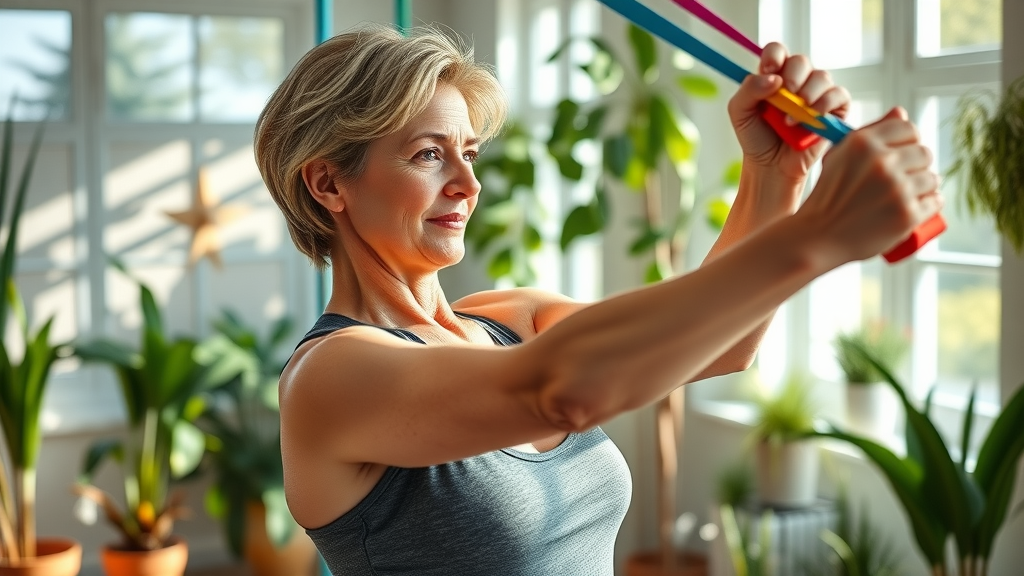
Stretching and Flexibility for Blood Circulation
Flexibility exercises support vascular health by ensuring blood vessels stay supple and free from constriction. Dynamic stretching, yoga, and Tai Chi enhance mobility and promote steady blood flow, reducing the occurrence of muscle cramps and swelling due to stagnant blood.
Dynamic stretching
Yoga poses that improve blood flow
Tai Chi
All age groups benefit from regular stretching, which can be modified for those with limited flexibility. Incorporating simple routines—like gentle yoga stretches or Tai Chi movements—can improve flexibility and circulation in a relaxing, low-impact way.

Special Focus: Gentle Exercises for Better Circulation in Seniors
Modified Routines for Limited Mobility
Seniors or those with limited mobility aren’t left out—gentle, adapted routines can be just as effective for improving circulation. Seated exercises, light ankle pumps, and basic stretching ensure that movement remains accessible while protecting joints and emphasizing safety. Group exercise classes for seniors also foster social engagement, which can encourage consistency.
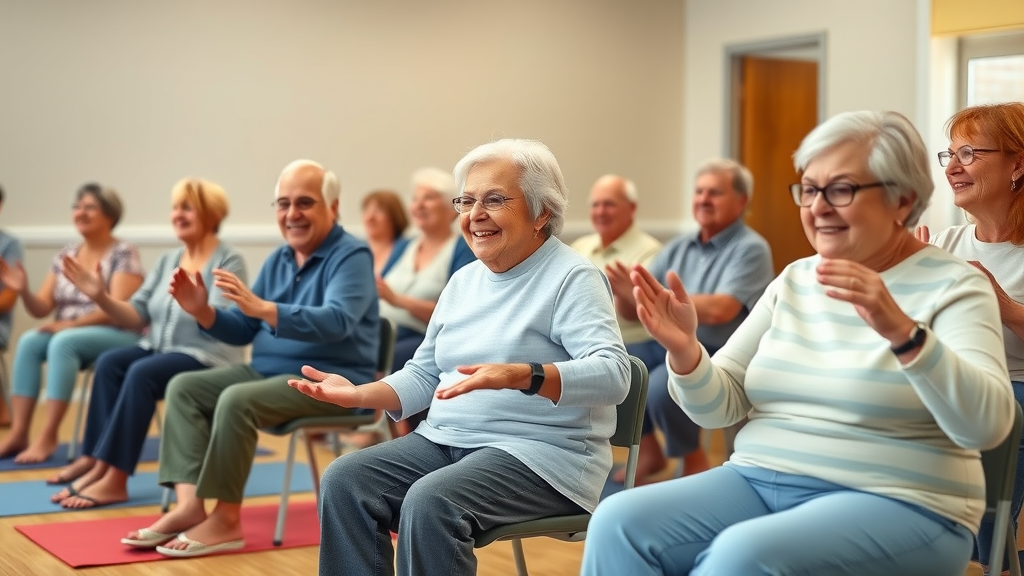
Adaptive Yoga and Seated Workouts
Adaptive yoga and chair-based movements are specifically designed to support vascular health for those who may have difficulty standing or balancing. Gentle stretches, ankle pumps, and slow arm movements can significantly improve blood flow, reduce swelling, and enhance overall sense of well-being. These routines are ideal for managing or preventing poor circulation and making activity a daily habit—no matter your mobility level.
Lifestyle Adjustments and Tools to Improve Circulation
Compression Socks and Stockings: Do They Work?
Compression socks and compression stockings are non-invasive tools proven to improve circulation and promote blood flow in the legs while reducing the risk of blood clots and varicose veins. These garments gently squeeze the legs, ensuring that blood does not pool in the lower extremities, especially beneficial for those who are sedentary, spend long periods sitting, or travel frequently.
While not a replacement for exercise, compression socks and stockings can supplement your routine—especially for individuals at higher risk for poor circulation, venous insufficiency, or those recovering from injury. When paired with movement, they help maintain healthy blood vessels and prevent blood from stagnating in the lower limbs.

Diet and Hydration for Blood Flow Support
A nutrient-rich diet and proper hydration are vital allies in improving blood circulation and supporting healthy blood flow throughout the body. Foods high in omega-3 fatty acids (such as fish and nuts), leafy greens, berries, and citrus fruits promote vascular health and prevent blood clots. Staying hydrated ensures that your blood remains fluid, reducing the risk of sluggish flow and high blood pressure.
Drinking water throughout the day prevents the blood from thickening, lessening the likelihood of poor blood flow and boosting cardiovascular health. Pairing good nutrition and hydration with regular exercise maximizes your efforts to circulate oxygen and nutrients wherever your body needs them most.

Managing Blood Pressure Through Activity
Physical activity is one of the most effective strategies for managing and reducing blood pressure, which is crucial for improving circulation and maintaining vascular health. Moderate-intensity activities like walking, biking, or swimming have been shown to significantly improve circulation and maintain blood pressure within healthy ranges. Regular exercise reduces the strain on the heart as it pumps blood and increases the elasticity of blood vessels.
"Consistency is key—regular movement remains the most reliable way to improve blood circulation long term." — Cardiologist Dr. Elaine Murphy
Even light movement throughout the day makes a noticeable difference in preventing the onset of hypertension and keeping your vascular system functioning optimally. The benefits compound over time, making movement an invaluable part of your daily routine.
Best Practices: When and How Often to Do Exercises for Better Circulation
Daily and Weekly Recommended Routine
Frequency guidelines: Aim for at least 30 minutes of moderate exercise most days of the week
Progression tips: Begin slowly if you’re new; gradually increase duration and intensity
Rest and recovery: Ensure you allow for recovery, especially after intense or new routines, to avoid overtraining and give blood vessels time to adapt
Listening to your body, starting with low-impact movements, and being consistent are all essential. You might notice improvements in your energy, color in your extremities, and less frequent muscle cramps within just a few weeks. With practice, routines become habits, and vascular health continues to strengthen over time.
“Once poor circulation has a diagnosed cause, work on a treatment plan with your healthcare provider and look at what measures you can take at home to help. You can work toward better circulation in many ways and improve your overall health in the process”. - Dr. Angela Golden, DNP, FNP-C, FAANP, from the Obesity Medicine Association
People Also Ask: Exercises for Better Circulation
What is the best exercise for poor circulation?
Brisk walking remains the top recommended exercise for poor circulation due to its ability to stimulate blood flow throughout the body with minimal strain. It’s accessible, effective, and can be performed by all ages and fitness levels, making it a first choice for improving circulation.
What improves blood circulation the most?
Regular aerobic activity, a balanced diet, and consistent hydration are considered the most effective ways to improve blood circulation. These factors work together to keep blood vessels robust, blood flowing, and waste products efficiently removed from your system.
How to improve blood circulation in just 3 minutes?
Rapid blood flow boosts can be achieved with quick stair climbs, a few jumping jacks, or several rounds of seated toe raises. Even brief bouts of movement help stimulate muscle pumps, sending fresh blood through your lower legs and throughout your vascular network almost immediately.
Does walking improve circulation?
Yes, walking is one of the simplest and most effective exercises for better circulation, especially for those new to regular activity. Walking daily helps prevent blood pooling in the lower limbs, keeps blood pressure in check, and enhances overall cardiovascular health.
Lists of Mistakes to Avoid When Doing Exercises for Better Circulation
Neglecting warm-up and cool-down
Overtraining without rest
Ignoring symptoms of poor circulation
Wearing tight or restrictive clothing
Each of these mistakes can impede progress or even worsen circulatory issues. Proper preparation, gradual advancement, and smart attire all support optimal results and long-term cardiovascular health.

FAQs: Exercises for Better Circulation
Can everyone do these exercises for better circulation?
Most exercises for better circulation can be adapted for all ages and abilities, but those with specific medical concerns should consult a healthcare professional for individualized advice.How soon can improvements be noticed?
Many people report feeling more energized and experiencing fewer symptoms within a week or two. Visible improvements, such as reduced swelling or warmer extremities, may take a bit longer depending on frequency and fitness level.Are any exercises unsuitable for people with high blood pressure or vascular disease?
Intense activities or heavy lifting should be approached cautiously. Gentle aerobic exercise is typically safe, but always check with your doctor before beginning a new routine, especially if you have vascular disease or hypertension.
Key Takeaways: Exercises for Better Circulation
Regular movement maximizes blood flow and overall health
Various exercises target unique aspects of circulation
Adapting routines for mobility levels ensures accessibility
Conclusion: Start Your Journey to Better Blood Circulation Today
Action is essential—choose your movement and embrace the journey to better circulation, improved energy, and lifelong health!
For those looking to maximize the benefits of their exercise routine, incorporating proper warm-up techniques can make a significant difference in joint comfort and overall mobility. Discover some highly effective walking warm up exercises that can help prepare your body and support joint health before you begin your circulation-boosting activities by visiting this practical guide on walking warm ups.
Sources
If you’re inspired to take your wellness journey even further, consider exploring the daily habits that contribute to overall vitality and resilience. Beyond circulation, adopting a holistic approach to health can have a profound impact on your energy, vision, and long-term well-being.
Uncover the secret habits of people with remarkably healthy eyes and see how small lifestyle changes can lead to lasting benefits by reading this insightful article on eye health and daily wellness routines. Your next step toward a healthier, more vibrant you could be just one habit away.
To further enhance your understanding of exercises that improve circulation, consider exploring the following resources:
“How to Increase Circulation in Your Legs with and Without Exercise”: This Healthline article provides a comprehensive overview of various methods to boost leg circulation, including specific exercises and lifestyle changes. (healthline.com)
“9 Ways to Improve Circulation”: Medical News Today outlines nine effective strategies to enhance blood flow, encompassing both physical activities and dietary recommendations. (medicalnewstoday.com)
These resources offer practical advice and detailed explanations to help you implement effective circulation-boosting exercises into your daily routine.
Thank you for visiting: https://ncwellnesshub.com/
 Add Row
Add Row  Add
Add 




Write A Comment